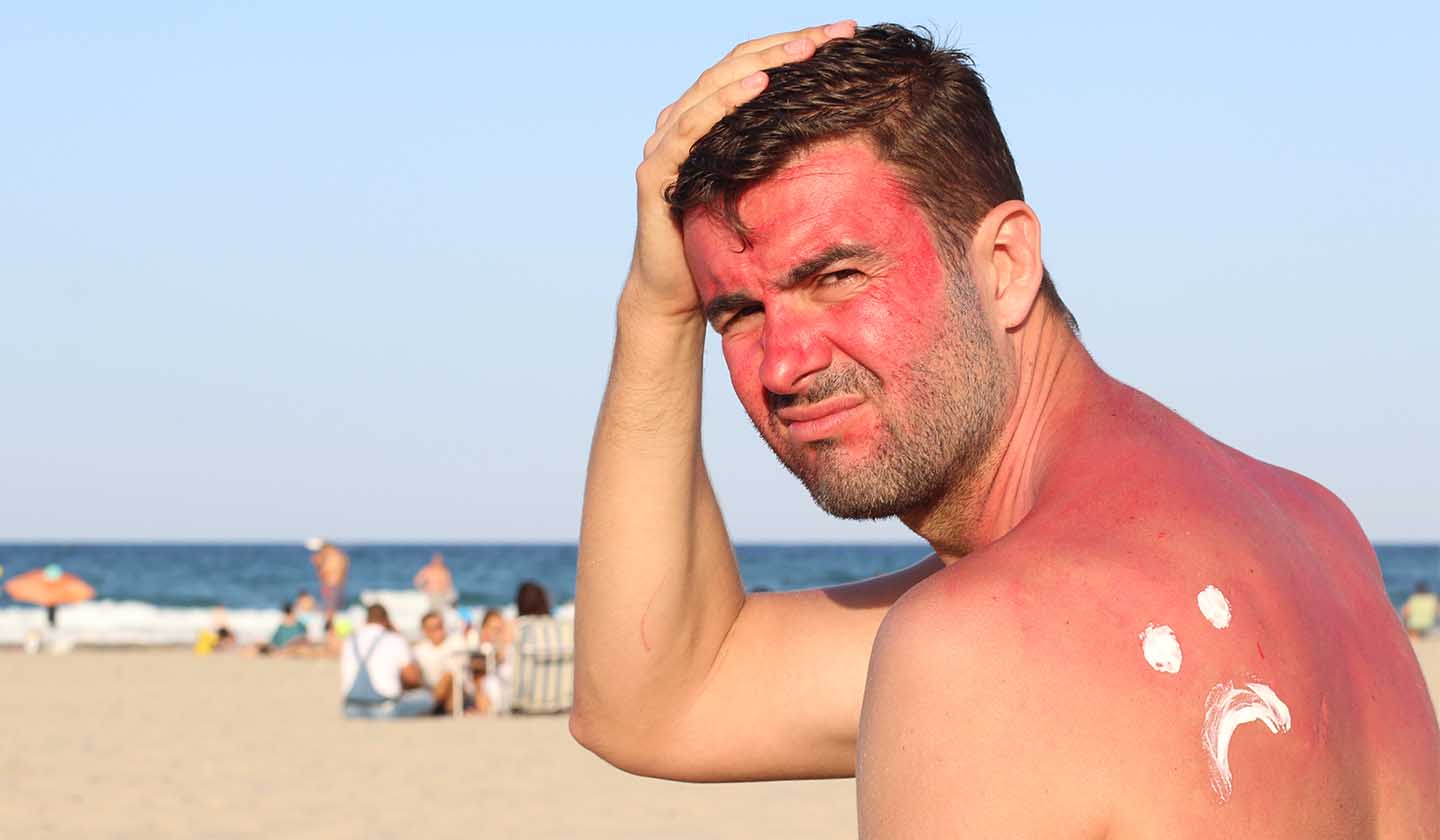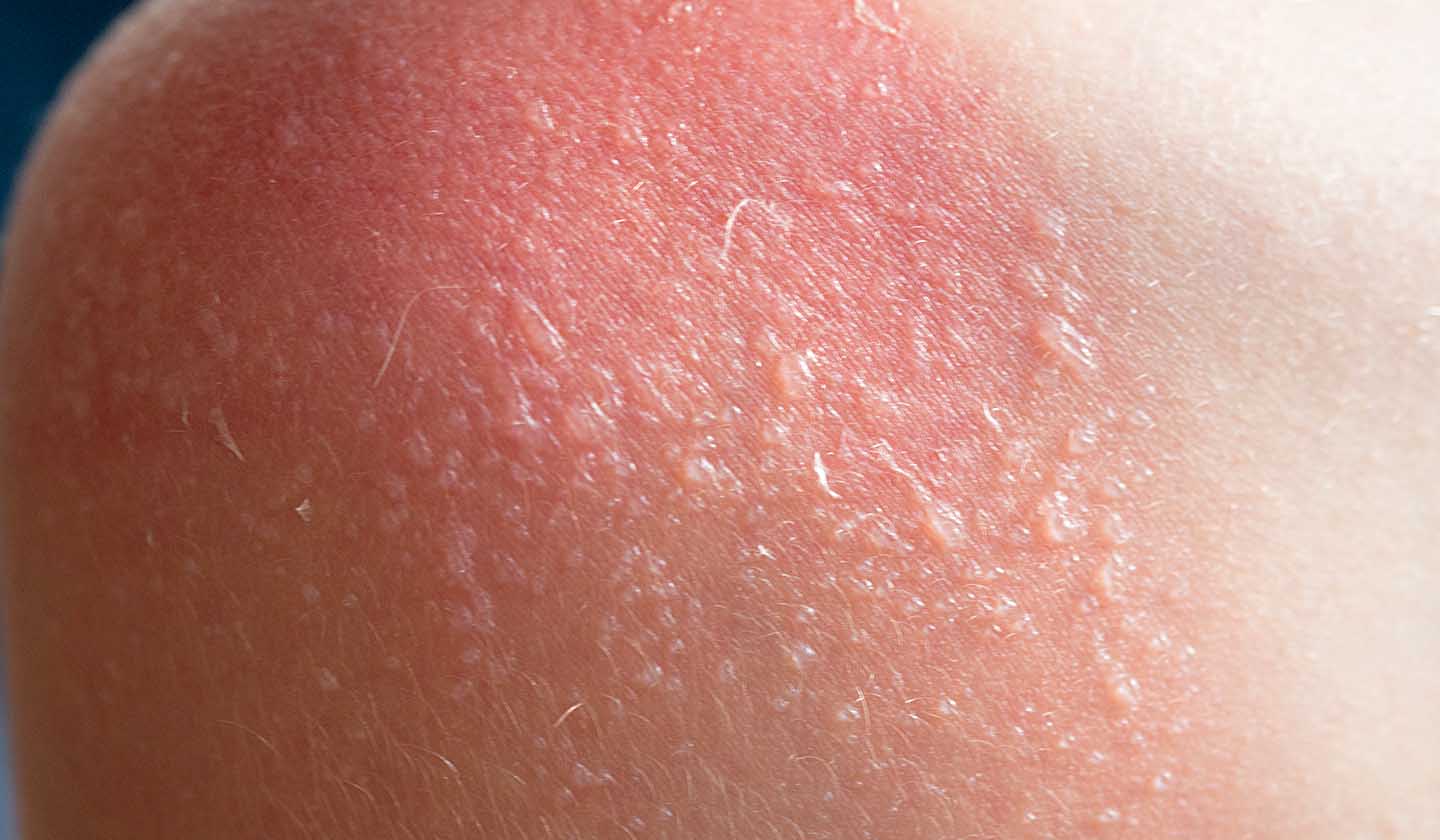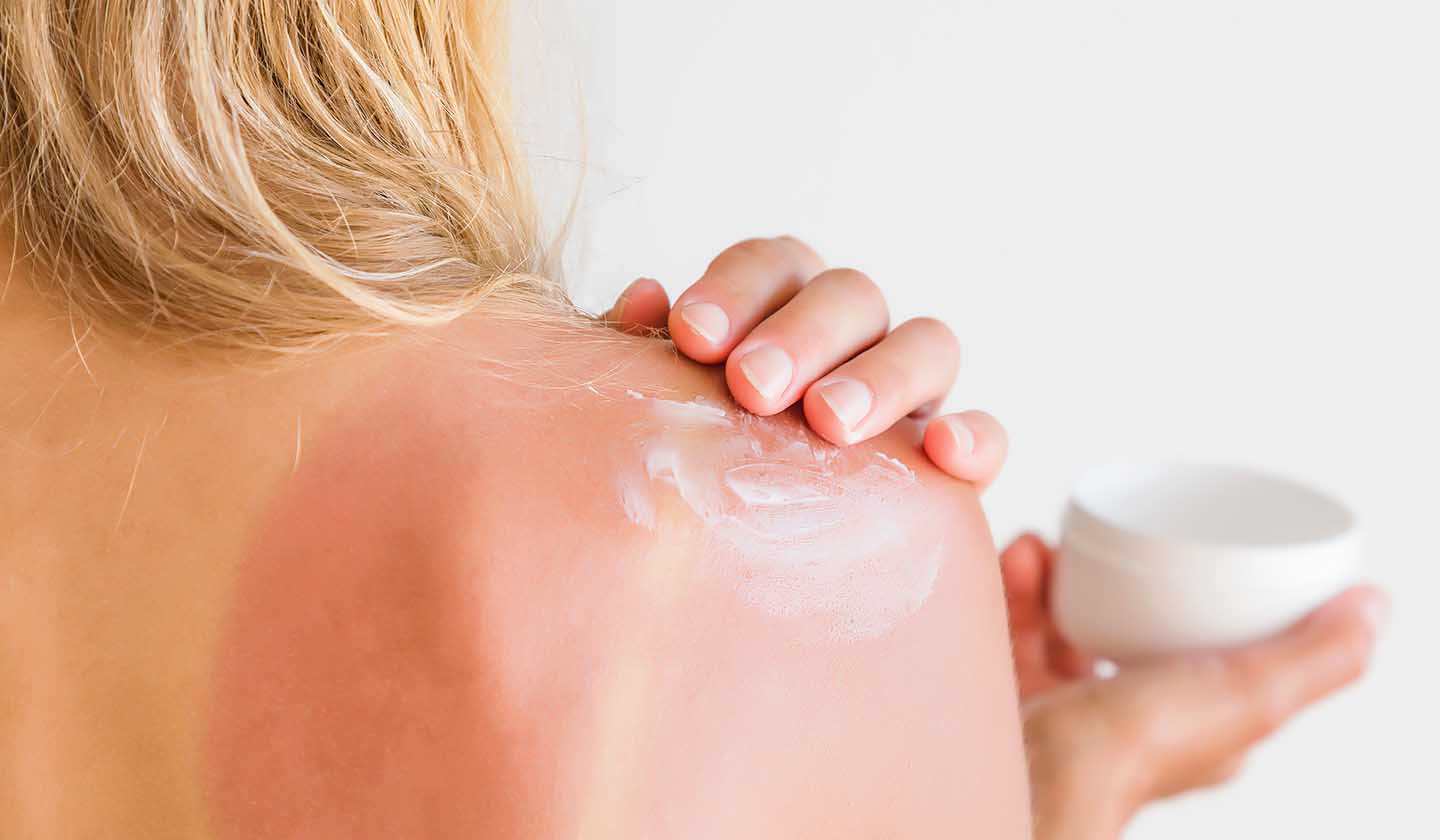Prevention and treatment
Whoever walks in the rain gets wet, but whoever walks in the sun doesn't have to get burnt

Did you get a sunburn during a walk in the countryside, on the beach or on the street?
The sun offers numerous health benefits, promotes our well-being and is essential to life. However, there may be some problems related to excessive exposure to the sun, such as sunburns.

Sunburns
Sunburns destroy the outer layer of the skin and damage the small underlying blood vessels.
Sun emitted ultraviolet radiation exists throughout the year and is responsible for sunburns. There are two types of rays:
- Ultraviolet A rays (UVA): penetrate more deeply into the skin, causing photoaging (spots and wrinkles).
- Ultraviolet B (UVB) rays: they reach the surface of the skin promoting tanning, but they also cause sunburn.
How to identify a sunburn?
Sunburn may not be visible immediately because the redness of the skin begins to develop between three to five hours after sun exposure.
Common symptoms of a mild sunburn, include:
- Red and warm skin;
- Skin sensitive to touch;
- Pain in the skin;
- Increased skin sensitivity to pressure and heat (hot water).
In severe sunburn there may be:
- Swelling;
- Intense pain;
- Blisters on the skin.
In situations of more severe sunburn, fever, chills and weakness may occur If so, talk to your doctor.

What you should do
In order to help soothe and heal a sunburn, it is important to start taking some measures, as soon as possible:
- Move away from the sun;
- Remove any clothing items that are over the sunburn, as long as they are not stuck to it;
- Have a cold-water bath/shower;
- Apply cold (but not ice cold) water compresses;
- You can apply thermal water on the affected area (as it softens and soothes the skin);
- Moisturise the affected skin with some specific post-sun exposure (“after sun”) cream, lotion, or spray. Apply preferably one that contains aloe vera.
- Wear loose fresh clothes that do not scratch;
- Increase your fluid ingestion (water or natural fruit juices without sugar to avoid dehydration);
- If you are in pain, you can take an analgesic (paracetamol) or an anti-inflammatory (ibuprofen).

What you should not do
- Apply ice cold water or ice on the sunburn (it can burn the affected area even more);
- Apply alcohol, butter, vaseline, fatty oils or egg white;
- Wear tight clothes over the sunburnt skin;
- Scratch or remove the peeling skin;
- Burst blisters.
A few days after sunburn, skin peeling and itching in the affected area may occur. The area of your skin affected by the sunburn is much more sensitive to solar radiation, therefore you should be careful with sun exposure.
How to prevent it?
Prevention is the key to a safer and smother sun exposure.
The following measures should be considered:
- Avoid direct sun exposure, especially between 12 a.m. and 4 p.m.;
- Use sunscreen with a high protection factor (30 or 50+) for UVA and UVB rays (reapply frequently);
- Wear sunglasses;
- Wear a wide-brimmed hat (as it helps protect the face, ears and neck).
Do you know that…
- Clouds let 60 to 80% of ultraviolet radiation pass through, which means that on cloudy days you should also apply sunscreen to your skin;
- Being out of the sun does not completely protect us from the sun rays, as they are reflected by water, sand, or grass, thus penetrating the skin;
- Cotton t-shirts that protect us from sunlight are only effective when dry.
Keep in mind that:
Sunburn damage to the skin has cumulative effects and may later contribute to the development of skin cancer.
Sources
iSaúde
Farmácia Distribuição Magazine
Também lhe poderá interessar
Prevention and treatment
Hyperpigmentation - When melanin stimuli need correction
Dermatology






